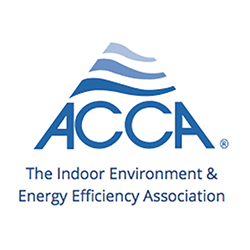Basements have different cooling requirements than the rest of the house. Whether you’re planning to add air conditioning to your basement as it is currently or are laying out plans for a finished basement, there are some things you need to consider. In today’s post, the local HVAC contractors at HVAC Construction, Inc. discuss the challenges of providing cooling to a finished basement.

Humidity
Humid indoor spaces tend to be uncomfortable, and can encourage mold and mildew growth. This is usually the case for basements because most of the space is underground. The three principal sources of moisture are: rainwater absorbed by the soil surrounding the basement wall, interior moisture from unvented clothes dryers, bathrooms and cooking, and humid air from the outdoors that comes through the basement windows. Curing concrete can also be a source if the basement is newly-built. With the constant presence of moisture, the basement HVAC system has to have a dehumidifier, either as a standalone unit or as part of the HVAC system.
Ventilation
Most basements are partially above grade, enough to accommodate windows for ventilation — there are even building codes that pertain to basement windows as egress. However, some basements can be entirely below grade, which means the space may have to completely rely on an HVAC system for ventilation. This means the ductwork and registers need to be sufficiently-sized and positioned to provide ample ventilation and cooling. Alternatively, you can install a mini-split system that’s independent of the house’s HVAC system.
Additional Floor Area
HVAC system sizes are selected based on the house’s total floor area. A finished basement will increase the floor space and may result in the existing HVAC system becoming undersized. Before committing to your basement remodeling plans, you’ll want to consult your HVAC technician to calculate your home’s new cooling requirement and determine whether your existing HVAC system is going to be up to the task. If it is, then all your basement will need are new air ducts.
However, if your existing HVAC system ends up undersized, you can either replace it with a bigger system — the ideal option if it’s due to be replaced — or, as discussed above, have a mini-split air conditioner and a dehumidifier installed.
Call HVAC Construction, Inc. for Your HVAC Needs
To learn more about why customers in Salt Lake City and the surrounding communities in Utah prefer HVAC Construction, give us a call at (801) 298-4822 or fill out our contact form to schedule an appointment.







